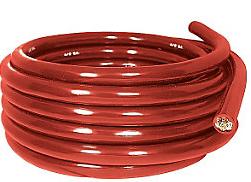REUK.CO.UK
The Renewable Energy Website
This is the printer friendly version of the Line Losses Calculator article from the Renewable Energy Website REUK.co.uk.
Click here to print
Printed at 05:48pm 22nd October 2025
Line Losses Calculator
An automatic calculator to work out line losses in DC powered systems
In our article Minimising Line Losses in RE Systems (1) we looked at how the diameter of wire (cable) should be selected to ensure that line losses (i.e. energy lost when the current flowing through a wire heat it up) are kept below 10%.

If you are interested in understanding the equations which are used to make the calculations below, then we recommend you read the article linked to above.
Wire Size Calculator
Enter the peak charging voltage (volts DC - e.g. 14V to 20V for a 12V rated wind turbine), wire length (metres), peak current (Amps), and maximum acceptable power loss (%, we suggest 10% or lower), and click Calculate to view the minimum cross sectional area of the wire you should use.To convert the above wire cross sectional area to AWG, mm diameter, or inch diameter, click here to go to our Automated AWG Wire Size Converter (2). Remember to choose a wire with a slightly larger cross sectional area than that recommended above to ensure that power losses are below your maximum acceptable percentage.
Line Losses Calculator
Alternatively use the calculator below to work out the line losses for a system with a given wire size (diameter measured in mm).Web Link References
(1) http://www.reuk.co.uk/Minimising-Line-Losses-in-RE-Systems.htm(2) http://www.reuk.co.uk/AWG-to-Square-mm-Wire-Size-Converter.htm
Article from REUK.co.uk:
http://www.reuk.co.uk/Line-Losses-Calculator.htm
Published: 24th September 2014
© REUK 2025